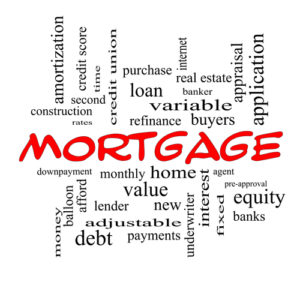When it comes time to apply for a mortgage, you have a lot of option to choose from, including fixed rate or adjustable rate loans. We’ll define them and discuss the pros and cons here.
Fixed-Rate Loans
A fixed-rate mortgage loan has one set interest rate for the entire length of the loan, typically 30 years (though they do come with shorter fixed periods, which we’ll cover.) That means the borrower knows exactly what their payment will be for all 360 payments, guaranteed no matter what happens to the value of the house, prevailing interest rate changes, or any other economic factors. If and when the borrower makes all payments (without refinancing or selling), they are assured they’ll have paid the mortgage off completely and own their home outright (unless there is a second loan.)
Obviously, the advantage of a fixed-rate loan is the stability and safety it provides, eliminating all risk and guesswork. If interest rates drop and they have enough equity and qualify, homeowners can still refinance into a new, lower-rate loan without restriction.
However, that advantage comes at a premium, as rates for 30-year fixed mortgages are typically a little bit higher than some other shorter-term fixed loans that are available. Likewise, if the homeowner plans on refinancing or selling within a handful of years, they may have squandered the advantage but still paid more in total interest.
30-year fixed-rate and fixed loans declined in popularity during the real estate boom, but they now comprise about 75% of all mortgage loans. 40 and 50-year amortized fixed loans were also readily available during the era of fast and easy mortgage products, but have become far more rare post-mortgage meltdown.
Another great option that allows homeowners to benefit from a fixed rate loan but enjoy a lower interest rate is a 15-year fixed rate mortgage loan. Instead of a 360-payment (30 year) amortization schedule, the mortgage is on schedule to reach a zero balance owed in only 180 payments, or 15 years.
15-year fixed loans typically have significantly lower interest rates than their 30-year counterparts. So what’s the drawback? Since you are condensing loan repayment to half the period, the monthly payments are higher, even considering a lower interest rate. But for homeowners who know they want to stay in their home (and their loan!) for 15 years without selling or refinancing, and pay off their home aggressively, a 15-year fixed loan is the perfect mortgage product.
Adjustable-Rate Loan
Unlike fixed-rate loans, adjustable-rate mortgage loans (ARMS) have an interest rate that changes or fluctuates. Most ARMS have an introductory period of several years where the interest rate and payments are fixed but after that time expires, the loan converts to a fully-adjustable loan, with payments that could go up or down monthly or annually. ARMS that adjust are usually based on certain economic indices, like the prime rate, LIBOR, treasury rate, etc.
ARMS allow a borrower to pay a lower payment, as they typically have lower interest rates than fully fixed loans, and even come with options where you only pay interest, not principal, for a certain period.
There are several instances where an ARM suits the needs of borrowers, such as if they are in a situation where they expect interest rates to go down or remain stable, they are in careers where they anticipate being paid more in the near future, or they expect to sell or refinance in a few years.
To put the risk in context, the average homeowner sells every 7 years and refinances every 3-5 years, but by no means should past averages dictate your particular homeownership and mortgage strategy.
For first time homebuyers, an ARM may help them qualify for a slightly higher loan amount based on the lower payments. This could help them stretch to qualify for a mortgage on the right home that they are confident will be a wise investment over time.
However, homeowners need to understand the risk of ARMS. When and if the fixed rate period expires and rates are higher (unless they sell or refinance first) they could see a significant jump in payment. If they don’t have enough equity to sell or refinance, or interest rates have gone up, they may be stuck in an unenviable position. They also won’t be accruing equity by paying down principal in the introductory phase of the loan.
ARMS usually come as:
10/1 ARM
Ten years fixed rate, then adjustable every year (or month).
7/1 ARM
Seven years fixed rate, then adjustable every year (or month).
5/1 ARM
Five years fixed rate, then adjustable every year (or month).
3/1 ARM or 2/1 ARM
Two or three years fixed rate, then adjustable every year (or month).
***
So which loan is right for you? There is no perfect loan, but one that is certainly the most responsible and beneficial mortgage product for your situation. Contact us and we can go over the factors that may help you make a financially prudent decision about taking out a fixed-rate versus adjustable-rate mortgage.

